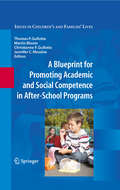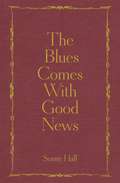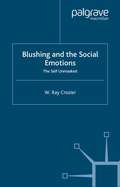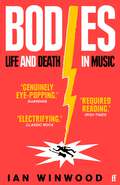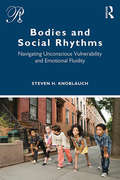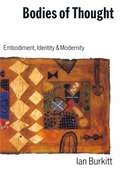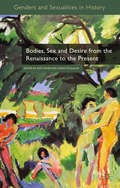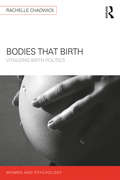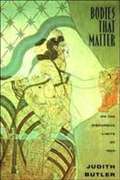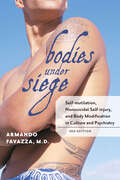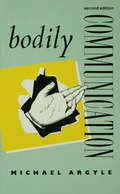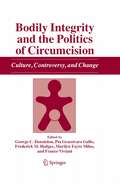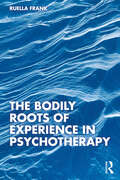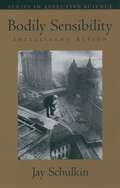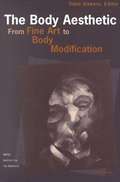- Table View
- List View
A Blueprint for Promoting Academic and Social Competence in After-School Programs (Issues in Children's and Families' Lives #10)
by Thomas P. Gullotta Martin Bloom Jennifer C. Messina Christianne F. GullottaSchool activities alone are not always sufficient to ensure children’s academic progress or socio-emotional development and well-being. And the time when many children typically have the least adult supervision – immediately after school – is also the time that they are at the highest risk to act as perpetrators or become victims of antisocial behavior. Throughout A Blueprint for Promoting Academic and Social Competence in After-School Programs, which focuses on children in grades 1 through 6, noted experts identify the best practices of effective programs and pinpoint methods for enhancing school-based skills and making them portable to home and neighborhood settings. This volume: (1) Analyzes the concepts central to effective after-school programs. (2) Offers developmental, cognitive, and social ecology perspectives on how children learn. (3) Features more than 100 exercises that develop young people’s capabilities for academic, social, moral, and emotional learning – These exercises are ready to use or can be adapted to students’ unique needs. (4) Emphasizes young people’s development as students and as productive members of society during middle to late childhood and early adolescence. (5) Presents explicit theory and evidence that can be used to explain the value of after-school programs for budget proposals. This important book will find an appreciative, ready audience among the program directors who design after-school curricula, the educators who implement them, the mental health and social work professionals who help staff them, and the current crop of graduate students who will create the next generation of programs.
The Blues Comes With Good News: The perfect gift for the poetry lover in your life
by Sonny HallSoul searching poetry for a new generation.Inspired by Diane di Prima, Rene Ricard, Henry Miller and others 'who tell it like it is', The Blues Comes with Good News is a collection of poems by prolific writer, Sonny Hall. The collection ranges from articulating addiction, self-destruction and identity, to romantic relationships, his journey to recovery and his unapologetic depiction of truth, through life and its happenings. At 18 years old Sonny entered a treatment centre for alcohol and drug addiction, after losing his biological mother - who he remained close to despite being adopted aged 4 - to a heroin overdose. Three months into his treatment, Hall started writing poems as a way of ordering 'all the madness' in his head. He has since written hundreds of poems, which all portray his newfound intimacy with life, figuring it out as he goes on, never failing to write sincerely about the sting of life, through a rare candour, explicit and seedy within the realms of his own indulgence. Illustrations by JACK LAVER
Blushing and the Social Emotions: The Self Unmasked
by W. CrozierThe blush is a ubiquitous, but little understood, phenomenon. It involves an involuntary change in the face that can express feelings, reveal character and cause intense anxiety. Crozier provides a scholarly, yet accessible, synthesis of new research, locating blushing within the context of the 'social emotions' of embarrassment, shame and shyness.
Board Certification in Clinical Neuropsychology: A Guide to Becoming ABPP/ABCN Certified Without Sacrificing Your Sanity (AACN Workshop Series)
by Kira E. Armstrong, PhD, ABPP Dean W. Beebe, PhD, ABPP Robin C. Hilsabeck, PhD, ABPP Michael W. Kirkwood PhD, ABPPPursuit of board certification through the American Board of Professional Psychology (ABPP) has become a standard expectation for clinical neuropsychologists. At the time this book was published, the American Board of Clinical Neuropsychology (ABCN) was the fastest growing specialty board of ABPP with over 1,000 active members. However, the board certification process is challenging and can be intimidating. The objectives of this book are to demystify the process and provide practical advice for achieving board certification through ABPP/ABCN. To start, benefits of board certification are summarized and common myths debunked. Next, individual chapters for each step in the process, as well as a chapter devoted to pursuit of the pediatric subspecialty, provide details about essential elements of the task, the process, the timeline, strategies for success, common pitfalls, and what happens behind the scenes at ABPP/ABCN. Each of these chapters also has tips for trainees and supervisors who want to get a jump on preparing for board certification. Finally, encouragement and guidance for individuals who encounter setbacks at any step along the way are offered.
Board Certification in Clinical Neuropsychology: A Guide to Becoming ABPP/ABCN Certified Without Sacrificing Your Sanity (AACN Workshop Series)
by Kira E. Armstrong, PhD, ABPP Dean W. Beebe, PhD, ABPP Robin C. Hilsabeck, PhD, ABPP Michael W. Kirkwood PhD, ABPPPursuit of board certification through the American Board of Professional Psychology (ABPP) has become a standard expectation for clinical neuropsychologists. At the time this book was published, the American Board of Clinical Neuropsychology (ABCN) was the fastest growing specialty board of ABPP with over 1,000 active members. However, the board certification process is challenging and can be intimidating. The objectives of this book are to demystify the process and provide practical advice for achieving board certification through ABPP/ABCN. To start, benefits of board certification are summarized and common myths debunked. Next, individual chapters for each step in the process, as well as a chapter devoted to pursuit of the pediatric subspecialty, provide details about essential elements of the task, the process, the timeline, strategies for success, common pitfalls, and what happens behind the scenes at ABPP/ABCN. Each of these chapters also has tips for trainees and supervisors who want to get a jump on preparing for board certification. Finally, encouragement and guidance for individuals who encounter setbacks at any step along the way are offered.
The Boarding School Girls: Developmental and Cultural Narratives
by Soosan Latham Roya FerdowsThey were children. Put on a train in a strange land, they waved goodbye to a parent as they headed to an educational institution that, unbeknownst to them, was to become their new home. Separated from their loving families, they strived to meet the expectations of the grownups and, in some cases, to rebel against them. Now, independent women, compassionate mothers, and astute professionals, they look back on their youth in the 1960’s and 1970’s to make sense of why they were sent away, and to give meaning to the sources that have sustained them over the years. Ex-boarders themselves, Latham and Ferdows provide vivid and emotionally embodied narratives of everyday lives of The Boarding School Girls. This unique collection of stories explores key issues of identity and lifespan development to seek understanding of the influence of national, religious and family culture on development within two conflicting sets of cultural values. Combining unique qualitative data with illuminating tales of resilience and accomplishment in what is likely to simultaneously inform and inspire readers with feelings of joy and sadness, love and hate, abandonment and hope, but mainly trust and forgiveness. The stories of eleven ‘little rich’ Persian girls are a nostalgic reminder of their past cross-cultural ordeals, a pragmatic perspective on psychological implications of boarding school education in England, and a celebration of the possibilities of the future. The Boarding School Girls is valuable reading for students in cultural, developmental and educational psychology and the humanities, as well as clinical psychologists and educators looking at the impact of boarding school on adolescent development.
The Boarding School Girls: Developmental and Cultural Narratives
by Soosan Latham Roya FerdowsThey were children. Put on a train in a strange land, they waved goodbye to a parent as they headed to an educational institution that, unbeknownst to them, was to become their new home. Separated from their loving families, they strived to meet the expectations of the grownups and, in some cases, to rebel against them. Now, independent women, compassionate mothers, and astute professionals, they look back on their youth in the 1960’s and 1970’s to make sense of why they were sent away, and to give meaning to the sources that have sustained them over the years. Ex-boarders themselves, Latham and Ferdows provide vivid and emotionally embodied narratives of everyday lives of The Boarding School Girls. This unique collection of stories explores key issues of identity and lifespan development to seek understanding of the influence of national, religious and family culture on development within two conflicting sets of cultural values. Combining unique qualitative data with illuminating tales of resilience and accomplishment in what is likely to simultaneously inform and inspire readers with feelings of joy and sadness, love and hate, abandonment and hope, but mainly trust and forgiveness. The stories of eleven ‘little rich’ Persian girls are a nostalgic reminder of their past cross-cultural ordeals, a pragmatic perspective on psychological implications of boarding school education in England, and a celebration of the possibilities of the future. The Boarding School Girls is valuable reading for students in cultural, developmental and educational psychology and the humanities, as well as clinical psychologists and educators looking at the impact of boarding school on adolescent development.
Boarding School Syndrome: The psychological trauma of the 'privileged' child
by Joy SchaverienBoarding School Syndrome is an analysis of the trauma of the 'privileged' child sent to boarding school at a young age. Innovative and challenging, Joy Schaverien offers a psychological analysis of the long-established British and colonial preparatory and public boarding school tradition. Richly illustrated with pictures and the narratives of adult ex-boarders in psychotherapy, the book demonstrates how some forms of enduring distress in adult life may be traced back to the early losses of home and family. Developed from clinical research and informed by attachment and child development theories ‘Boarding School Syndrome’ is a new term that offers a theoretical framework on which the psychotherapeutic treatment of ex-boarders may build. Divided into four parts, History: In the Name of Privilege; Exile and Healing; Broken Attachments: A Hidden Trauma, and The Boarding School Body, the book includes vivid case studies of ex-boarders in psychotherapy. Their accounts reveal details of the suffering endured: loss, bereavement and captivity are sometimes compounded by physical, sexual and psychological abuse. Here, Joy Schaverien shows how many boarders adopt unconscious coping strategies including dissociative amnesia resulting in a psychological split between the 'home self' and the 'boarding school self'. This pattern may continue into adult life, causing difficulties in intimate relationships, generalized depression and separation anxiety amongst other forms of psychological distress. Boarding School Syndrome demonstrates how boarding school may damage those it is meant to be a reward and discusses the wider implications of this tradition. It will be essential reading for psychoanalysts, Jungian analysts, psychotherapists, art psychotherapists, counsellors and others interested in the psychological, cultural and international legacy of this tradition including ex-boarders and their partners.
Boarding School Syndrome: The psychological trauma of the 'privileged' child
by Joy SchaverienBoarding School Syndrome is an analysis of the trauma of the 'privileged' child sent to boarding school at a young age. Innovative and challenging, Joy Schaverien offers a psychological analysis of the long-established British and colonial preparatory and public boarding school tradition. Richly illustrated with pictures and the narratives of adult ex-boarders in psychotherapy, the book demonstrates how some forms of enduring distress in adult life may be traced back to the early losses of home and family. Developed from clinical research and informed by attachment and child development theories ‘Boarding School Syndrome’ is a new term that offers a theoretical framework on which the psychotherapeutic treatment of ex-boarders may build. Divided into four parts, History: In the Name of Privilege; Exile and Healing; Broken Attachments: A Hidden Trauma, and The Boarding School Body, the book includes vivid case studies of ex-boarders in psychotherapy. Their accounts reveal details of the suffering endured: loss, bereavement and captivity are sometimes compounded by physical, sexual and psychological abuse. Here, Joy Schaverien shows how many boarders adopt unconscious coping strategies including dissociative amnesia resulting in a psychological split between the 'home self' and the 'boarding school self'. This pattern may continue into adult life, causing difficulties in intimate relationships, generalized depression and separation anxiety amongst other forms of psychological distress. Boarding School Syndrome demonstrates how boarding school may damage those it is meant to be a reward and discusses the wider implications of this tradition. It will be essential reading for psychoanalysts, Jungian analysts, psychotherapists, art psychotherapists, counsellors and others interested in the psychological, cultural and international legacy of this tradition including ex-boarders and their partners.
Bodies: Life and Death in Music
by Ian WinwoodMoney, freedom, adoring fans: professional musicians seem to have it all. But beneath the surface lies a frightening truth: for years the music industry has tolerated death, addiction and exploitation in the name of entertainment.In Bodies, Ian Winwood explores the industry's reluctance to confront its many failures in a far-reaching story which features first-hand access to artists such as Foo Fighters, Green Day, Trent Reznor, Biffy Clyro, Kings of Leon, Chris Cornell, Mark Lanegan, Pearl Jam. Much more than a touchline reporter, Winwood also tells the tale of his own mental-health collapse following the shocking death of his father. Written with warmth, humour and bracing honesty, Bodies is a deeply personal story and essential reading for musicians and fans alike.
Bodies and Social Rhythms: Navigating Unconscious Vulnerability and Emotional Fluidity (Psychoanalysis in a New Key Book Series)
by Steven KnoblauchThis exciting new book traces the development of an unfolding challenge for psychoanalytic attention, which augments contemporary theoretical lenses focusing on structures of meaning, with an accompanying registration different than and interacting with structural experience. This accompanying registration of experience is given the term ‘fluidity’ in order to characterize it as too fast moving and unformulated to be symbolized with linguistic categorization. Expanding attention from speech meaning to include embodied registrations of rhythm involving tonality, pauses and accents can catalyze additional and often emotionally more significant communications central to the state of the transactional field in any psychoanalytic moment. This perspective is contextualized within recognition of how cultural practices and beliefs are carried along both structural and fluid registrations of experience and can shape emotional turbulence for both interactants in a clinical encounter. Experiences of gender, culture, class and race emerging as sources of conflict and mis-recognition are engaged and illustrated throughout the text. This book, part of the popular "Psychoanalysis in a New Key" book series, will appeal to teaching and practicing psychoanalysts, but also an increasing volume of therapists attending to embodied experience in their practice and drawn to the practical clinical illustrations.
Bodies and Social Rhythms: Navigating Unconscious Vulnerability and Emotional Fluidity (Psychoanalysis in a New Key Book Series)
by Steven KnoblauchThis exciting new book traces the development of an unfolding challenge for psychoanalytic attention, which augments contemporary theoretical lenses focusing on structures of meaning, with an accompanying registration different than and interacting with structural experience. This accompanying registration of experience is given the term ‘fluidity’ in order to characterize it as too fast moving and unformulated to be symbolized with linguistic categorization. Expanding attention from speech meaning to include embodied registrations of rhythm involving tonality, pauses and accents can catalyze additional and often emotionally more significant communications central to the state of the transactional field in any psychoanalytic moment. This perspective is contextualized within recognition of how cultural practices and beliefs are carried along both structural and fluid registrations of experience and can shape emotional turbulence for both interactants in a clinical encounter. Experiences of gender, culture, class and race emerging as sources of conflict and mis-recognition are engaged and illustrated throughout the text. This book, part of the popular "Psychoanalysis in a New Key" book series, will appeal to teaching and practicing psychoanalysts, but also an increasing volume of therapists attending to embodied experience in their practice and drawn to the practical clinical illustrations.
Bodies of Thought
by Ian BurkittIn this incisive and truly impressive book, Ian Burkitt critically addresses the dualism between mind and body, thought and emotion, rationality and irrationality, and the mental and the material, which haunt the post-Cartesian world. Drawing on the work of contemporary social theorists and feminist writers, he argues that thought and the sense of being a person is inseparable from bodily practices within social relations, even though such active experience may be abstracted and expanded upon through the use of symbols. Overcoming classic dualisms in social thought, Burkitt argues that bodies are not purely the constructs of discourses of power: they are also productive, communicative, and invested with powerful capacities for changing the social and natural worlds. He goes on to consider how such powers can be developed in more ethical forms of relations and activities.
Bodies, Sex and Desire from the Renaissance to the Present (Genders and Sexualities in History)
by Kate Fisher Sarah ToulalanAn examination of how bodies and sexualities have been constructed, categorised, represented, diagnosed, experienced and subverted from the fifteenth to the early twenty-first century. It draws attention to continuities in thinking about bodies and sex: concept may have changed, but hey nevertheless draw on older ideas and language.
Bodies that Birth: Vitalizing Birth Politics (Women and Psychology)
by Rachelle ChadwickBodies that Birth puts birthing bodies at the centre of questions about contemporary birth politics, power, and agency. Arguing that the fleshy and embodied aspects of birth have been largely silenced in social science scholarship, Rachelle Chadwick uses an array of birth stories, from diverse race-class demographics, to explore the narrative entanglements between flesh, power, and sociomateriality in relation to birth. Adopting a unique theoretical framework incorporating new materialism, feminist theory, and a Foucauldian ‘analytics of power’, the book aims to trace and trouble taken-for-granted assumptions about birthing bodies. Through a diffractive and dialogical approach, the analysis highlights the interplay between corporeality, power, and ideologies in the making of birth narratives across a range of intersectional differences. The book shows that there is no singular birthing body apart from sociomaterial relations of power. Instead, birthing bodies are uncertain zones or unpredictable assortments of physiology, flesh, sociomateriality, discourse, and affective flows. At the same time, birthing bodies are located within intra-acting fields of power relations, including biomedicine, racialized patriarchy, socioeconomics, and geopolitics. Bodies that Birth brings the voices of women from different sociomaterial positions into conversation. Ultimately, the book explores how attending to birthing bodies can vitalize global birth politics by listening to what matters to women in relation to birth. This is fascinating reading for researchers, academics, and students from across the social sciences.
Bodies that Birth: Vitalizing Birth Politics (Women and Psychology)
by Rachelle ChadwickBodies that Birth puts birthing bodies at the centre of questions about contemporary birth politics, power, and agency. Arguing that the fleshy and embodied aspects of birth have been largely silenced in social science scholarship, Rachelle Chadwick uses an array of birth stories, from diverse race-class demographics, to explore the narrative entanglements between flesh, power, and sociomateriality in relation to birth. Adopting a unique theoretical framework incorporating new materialism, feminist theory, and a Foucauldian ‘analytics of power’, the book aims to trace and trouble taken-for-granted assumptions about birthing bodies. Through a diffractive and dialogical approach, the analysis highlights the interplay between corporeality, power, and ideologies in the making of birth narratives across a range of intersectional differences. The book shows that there is no singular birthing body apart from sociomaterial relations of power. Instead, birthing bodies are uncertain zones or unpredictable assortments of physiology, flesh, sociomateriality, discourse, and affective flows. At the same time, birthing bodies are located within intra-acting fields of power relations, including biomedicine, racialized patriarchy, socioeconomics, and geopolitics. Bodies that Birth brings the voices of women from different sociomaterial positions into conversation. Ultimately, the book explores how attending to birthing bodies can vitalize global birth politics by listening to what matters to women in relation to birth. This is fascinating reading for researchers, academics, and students from across the social sciences.
Bodies That Matter: On The Discursive Limits Of "sex"
by Judith ButlerIn Bodies That Matter,Judith Butler further develops her distinctive theory of gender by examining the workings of power at the most "material" dimensions of sex and sexuality. Deepening the inquiries she began in GenderTrouble,Butler offers an original reformulation of the materiality of bodies, examining how the power of heterosexual hegemony forms the "matter" of bodies, sex, and gender. Butler argues that power operates to constrain "sex" from the start, delimiting what counts as a viable sex. She offers a clarification of the notion of "performativity" introduced in Gender Troubleand explores the meaning of a citational politics. The text includes readings of Plato, Irigaray, Lacan, and Freud on the formation of materiality and bodily boundaries; "Paris is Burning," Nella Larsen's "Passing," and short stories by Willa Cather; along with a reconsideration of "performativity" and politics in feminist, queer, and radical democratic theory.
Bodies under Siege: Self-mutilation, Nonsuicidal Self-injury, and Body Modification in Culture and Psychiatry
by Armando R. FavazzaA quarter century after it was first published, Bodies under Siege remains the classic, authoritative book on self-mutilation. Now in its third edition, this invaluable work is updated throughout with findings from hundreds of new studies, discussions of new models of self-injury, an assessment of the S.A.F.E. (Self Abuse Finally Ends) program, and the Bill of Rights for People Who Self-harm. Armando Favazza’s pioneering work identified a wide range of forces, many of them cultural and societal, that compel or impel people to mutilate themselves. This new edition examines the explosive growth in the incidence of self-injurious behaviors and body modification practices. Favazza critically assesses new and significant biological, ethnological, social, and psychological findings regarding self-injury; presents current understandings of self-injurious acts from cultural and clinical perspectives; and places self-mutilation in historical and contemporary context.
Bodily Communication
by Michael ArgyleNon-verbal communication - the eye movements, facial expressions, tone of voice, postures and gestures that we all use more or less consciously and more or less effectively - can enhance or diminish every form of social interaction. Michael Argyle's second edition of Bodily Communication is an invaluable up-to-date guide for students of the subject. In the last ten years NVC has become recognized as an important part of social psychology and of professional training, particularly in social work, education and management.Greatly expanded from the first edition, and significantly revised, this second edition has two completely new chapters on social skills and personality, and a new chapter on research methods. The author, a pioneer in the study of non-verbal communication, presents the second edition in the same accessible style as the first, bringing to the reader both his intense interest in the subject and his authoritative knowledge of it.
Bodily Communication
by Michael ArgyleNon-verbal communication - the eye movements, facial expressions, tone of voice, postures and gestures that we all use more or less consciously and more or less effectively - can enhance or diminish every form of social interaction. Michael Argyle's second edition of Bodily Communication is an invaluable up-to-date guide for students of the subject. In the last ten years NVC has become recognized as an important part of social psychology and of professional training, particularly in social work, education and management.Greatly expanded from the first edition, and significantly revised, this second edition has two completely new chapters on social skills and personality, and a new chapter on research methods. The author, a pioneer in the study of non-verbal communication, presents the second edition in the same accessible style as the first, bringing to the reader both his intense interest in the subject and his authoritative knowledge of it.
Bodily Integrity and the Politics of Circumcision: Culture, Controversy, and Change
by George C. Denniston Pia Grassivaro Gallo Frederick M. Hodges Marilyn Fayre Milos Franco VivianiEvery year 13.3 millions boys and 2 million girls are subjected to circumcision, the involuntary removal of part or all of their external sex organs. Bodily Integrity and the Politics of Circumcision illuminates the vulnerability of human society to medical, economic, and historical pressures. It provides a much-needed, thoughtful, and detailed analysis of the devastating impact of circumcision on bodily integrity and human rights, and it provides hope for change.
The Bodily Roots of Experience in Psychotherapy
by Ruella FrankThis book explores the significance of movement processes as they shape one’s experience through life. It provides a comprehensive, practical understanding of how we lose the wonder and curiosity we move with as children, and how we can reclaim that. A new paradigm is presented in the making of experience through a radical and thorough investigation into the basics of animated life. The book utilizes a precise phenomenological language for those subverbal interactions that form the foundation of lived experience. The centrality of those interactions to the therapeutic encounter is set forth through richly detailed therapy vignettes. The building of experience is meticulously explored via the bridging of infant-parent dyads and the functional similarity of those dyads to the unfolding patient-therapist relationship. Readers learn to acknowledge routine inhibitions developed in early life, appreciate their former usefulness, and discover how to restore the lively flow of moving-feeling responses. This book is essential for all psychotherapists who wish to integrate the dynamics of movement into their work; educators who work with babies and young children; and all those wishing to understand better their psychophysical selves.
The Bodily Roots of Experience in Psychotherapy
by Ruella FrankThis book explores the significance of movement processes as they shape one’s experience through life. It provides a comprehensive, practical understanding of how we lose the wonder and curiosity we move with as children, and how we can reclaim that. A new paradigm is presented in the making of experience through a radical and thorough investigation into the basics of animated life. The book utilizes a precise phenomenological language for those subverbal interactions that form the foundation of lived experience. The centrality of those interactions to the therapeutic encounter is set forth through richly detailed therapy vignettes. The building of experience is meticulously explored via the bridging of infant-parent dyads and the functional similarity of those dyads to the unfolding patient-therapist relationship. Readers learn to acknowledge routine inhibitions developed in early life, appreciate their former usefulness, and discover how to restore the lively flow of moving-feeling responses. This book is essential for all psychotherapists who wish to integrate the dynamics of movement into their work; educators who work with babies and young children; and all those wishing to understand better their psychophysical selves.
Bodily Sensibility: Intelligent Action (Series in Affective Science)
by Jay SchulkinAlthough we usually identify our abilities to reason, to adapt to situations, and to solve problems with the mind, recent research has shown that we should not, in fact, detach these abilities from the body. This work provides an integrative framework for understanding how these abilities are affected by visceral reactions. Schulkin presents provocative neuroscientific research demonstrating that thought is not on one side and bodily sensibility on the other; from a biological point of view, they are integrated. Schulkin further argues that this integration has important implications for judgements about art and music, moral sensibilities, attraction and revulsion, and our perpetual inclination to explain ourselves and our surroundings.
The Body Aesthetic: From Fine Art to Body Modification (PDF)
by Tobin Anthony SiebersThe last thirty years of cultural theory have seen a vigorous analytic focus on the human body both as the subject of cultural representations and as an escape from their repressive influence. Rare is the account that focuses on the most obvious fact about the body: it is the stuff out of which human beings are made. Generously and variously illustrated, this volume gathers together the work of literary critics and artists, classicists, art historians, and specialists on the history of the body, who survey the strangeness and variety with which the body has given human beings form. Richard Leppert traces how the representation of little girls responds directly to the cultural anxieties of modernity. Rene Girard plots how starvation becomes an art form, while Eric Gans surveys the contemporary phenomenon of body modification. Sander Gilman explores aesthetic surgery as a response to human unhappiness. Simon Goldhill discovers in the Roman empire the initial stirrings of institutions that focus on the spectacle of the body, and Cynthia S. Greig provides a glimpse of what the history of photography would look like if male nudes replaced female ones. Marion Jackson details how the different physical existence of the Inuit guides the way they make art. Joseph Grigely transforms aesthetics as usual by focusing on the disabled body, while Tobin Siebers describes the traumatic appeal in both fine art and the media of wounded flesh, whether human or animal. The Body Aesthetic is a broad exercise in cultural studies and will address a variety of readers, from those interested in detailed, theoretical accounts of the body, to those interested in belles lettres, to those interested in fine art.
